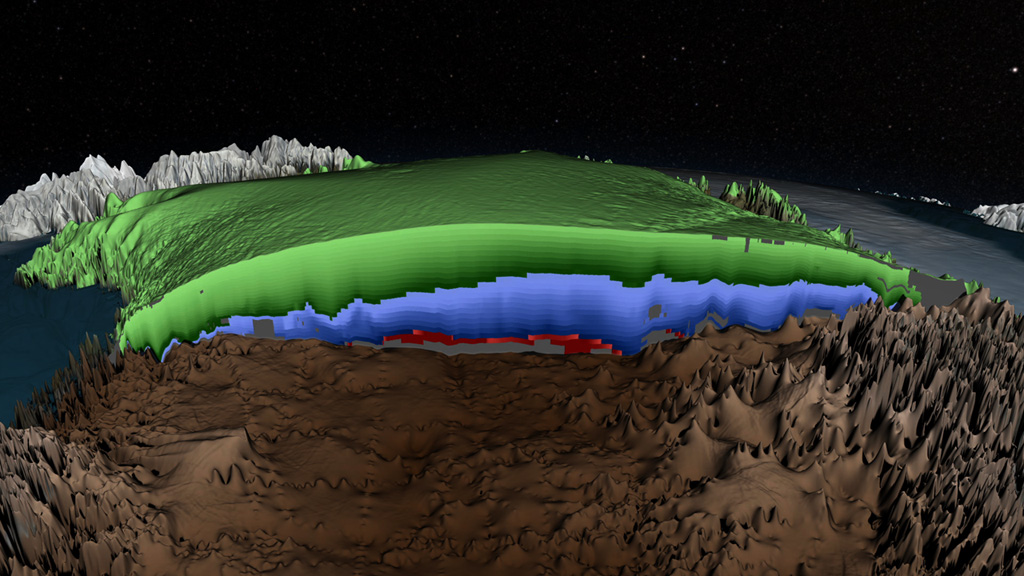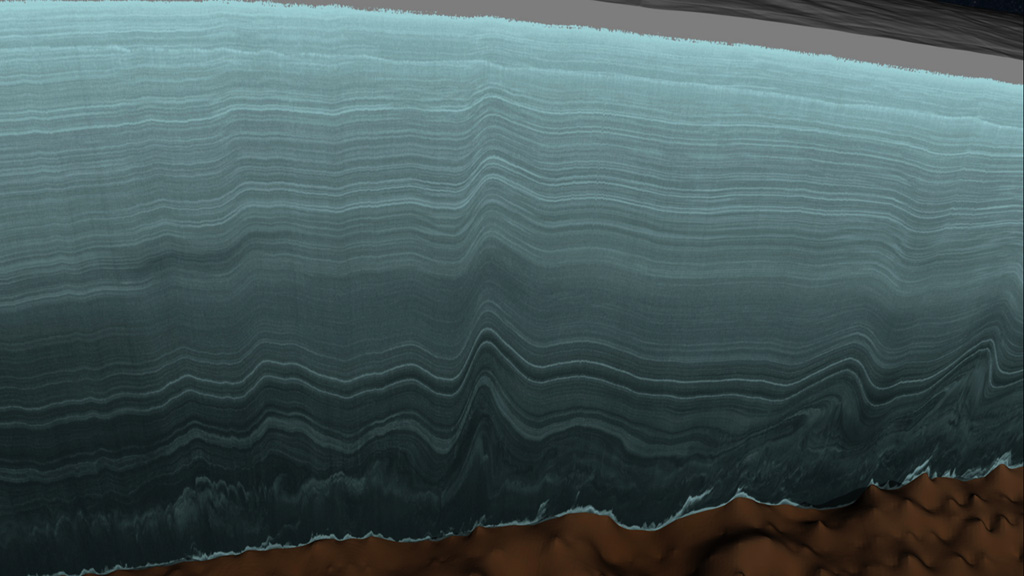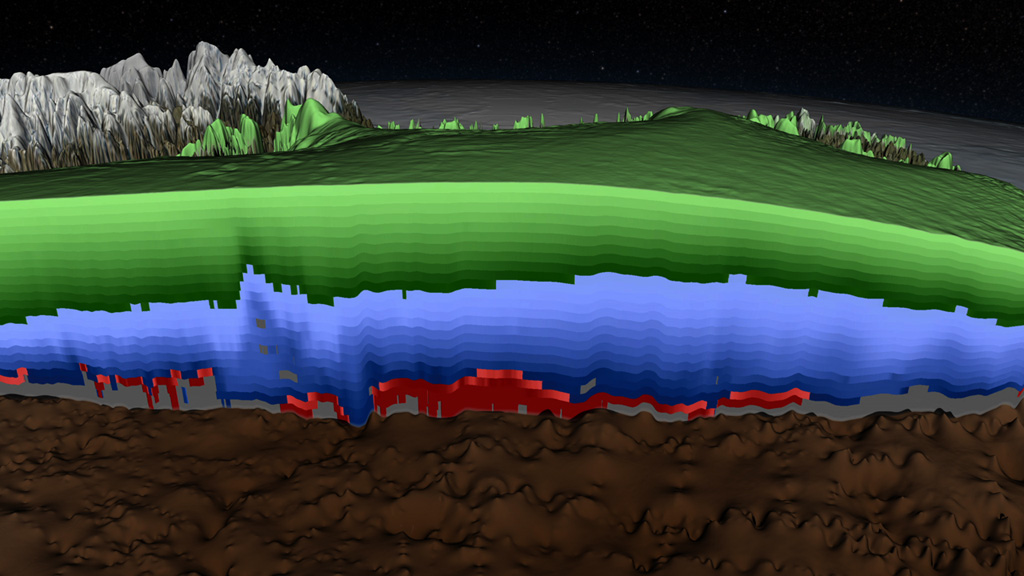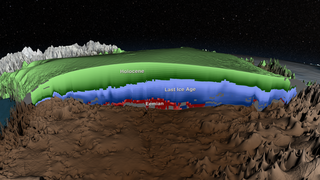Earth
ID: 11736

Greenland is the second largest mass of ice on Earth, containing enough water to raise ocean levels by about 20 feet. The ice sheet has been losing mass over the past two decades and warming temperatures will mean more losses in the future. Since 2009, a NASA airborne mission called Operation IceBridge has surveyed Greenland using a variety of instruments including radar and laser altimeters to measure the internal layering of its ice and changes to the ice sheet’s thickness. Now, the radar data has been combined with observations from ground-based surveys and earlier airborne missions to create the first comprehensive map of layers deep inside the ice sheet. The map reveals how the ice sheet’s layers formed in response to periods of climate change dating back to more than a hundred thousand years ago when temperatures were roughly as warm as today. Scientists will use the information to help evaluate models that project Greenland’s future contribution to sea-level rise. Watch the video to learn more.



Dating Ice




Related Story
For More Information
Story Credits
Lead Visualizer/Animator:
Cindy Starr (Global Science and Technology, Inc.)
Visualizer/Animator:
Greg Shirah (NASA/GSFC)
Video Editors:
Jefferson Beck (USRA)
Cindy Starr (Global Science and Technology, Inc.)
Stuart A. Snodgrass (HTSI)
Narration:
Joe MacGregor (University of Texas)
Jefferson Beck (USRA)
Mark Fahnestock (University of Alaska)
Cindy Starr (Global Science and Technology, Inc.)
Narrator:
Jefferson Beck (USRA)
Producer:
Jefferson Beck (USRA)
Lead Scientists:
Joe MacGregor (University of Texas)
Mark Fahnestock (University of Alaska)
Lead Writer:
George R. Hale (Telophase)
Cindy Starr (Global Science and Technology, Inc.)
Visualizer/Animator:
Greg Shirah (NASA/GSFC)
Video Editors:
Jefferson Beck (USRA)
Cindy Starr (Global Science and Technology, Inc.)
Stuart A. Snodgrass (HTSI)
Narration:
Joe MacGregor (University of Texas)
Jefferson Beck (USRA)
Mark Fahnestock (University of Alaska)
Cindy Starr (Global Science and Technology, Inc.)
Narrator:
Jefferson Beck (USRA)
Producer:
Jefferson Beck (USRA)
Lead Scientists:
Joe MacGregor (University of Texas)
Mark Fahnestock (University of Alaska)
Lead Writer:
George R. Hale (Telophase)
Please give credit for this item to:
NASA's Scientific Visualization Studio
NASA's Scientific Visualization Studio
Short URL to share this page:
https://svs.gsfc.nasa.gov/11736
Keywords:
SVS >> App
NASA Science >> Earth
https://svs.gsfc.nasa.gov/11736
Keywords:
SVS >> App
NASA Science >> Earth








